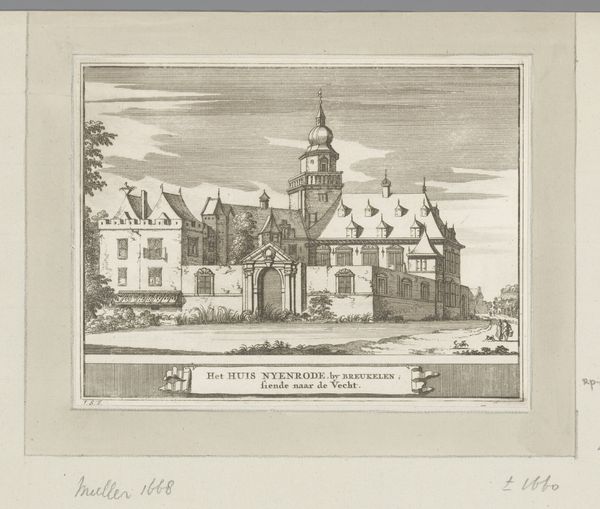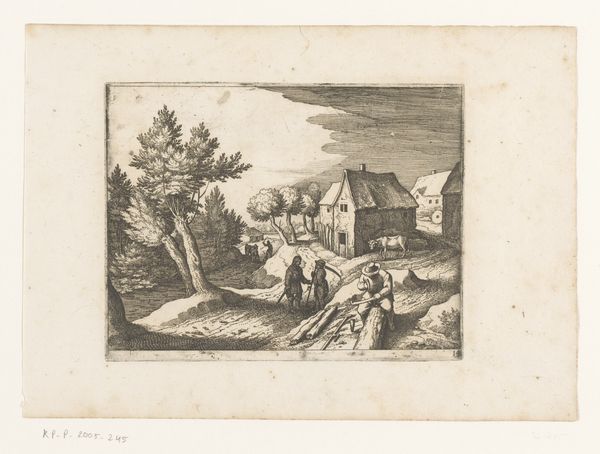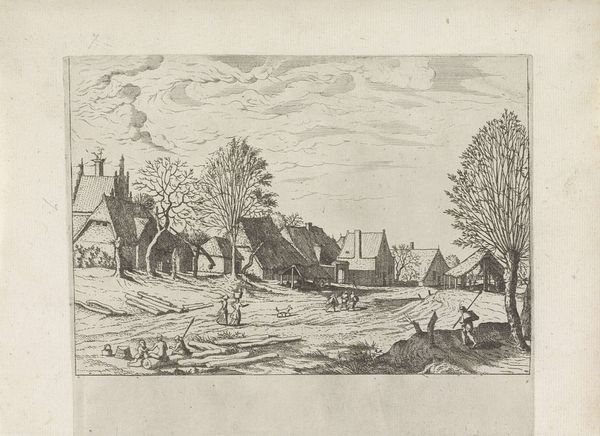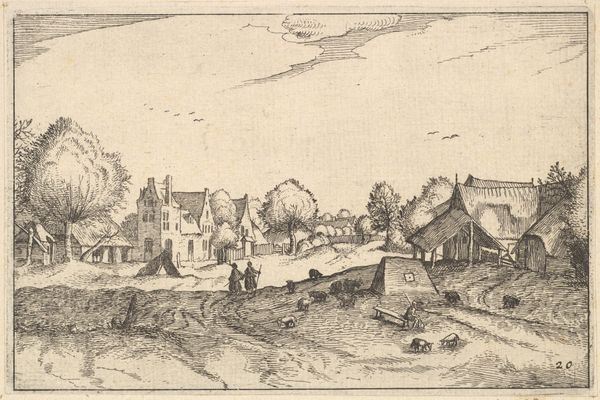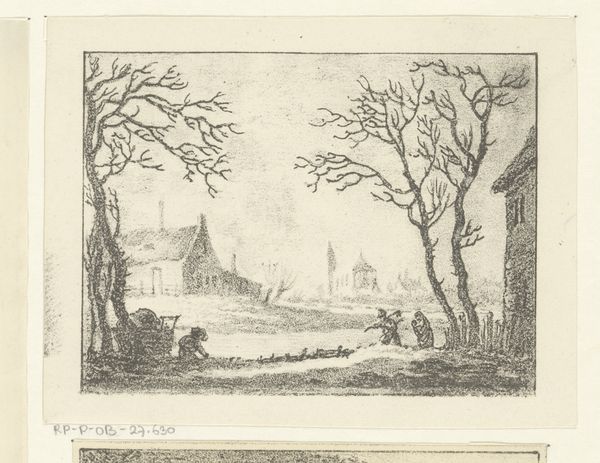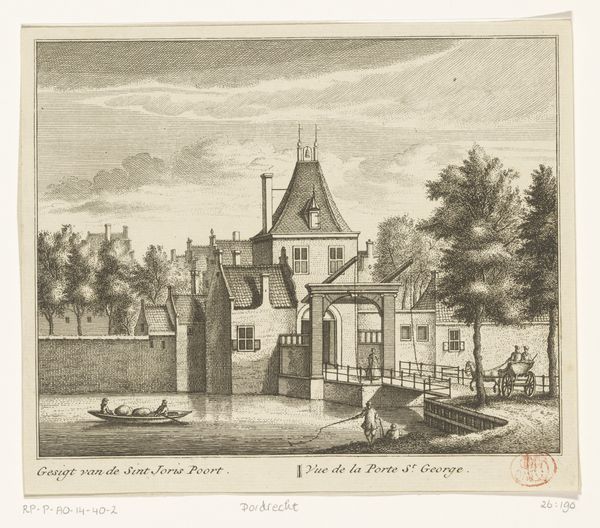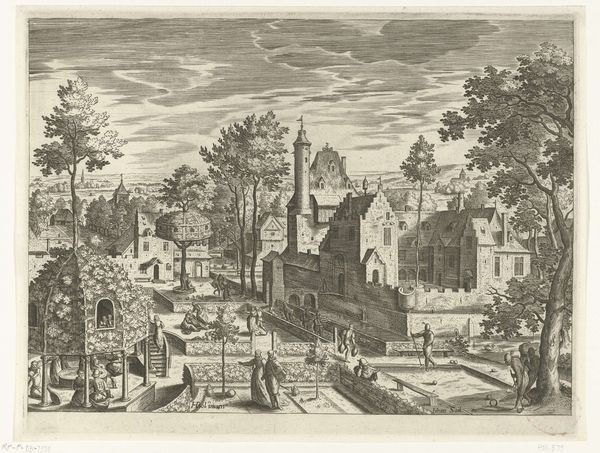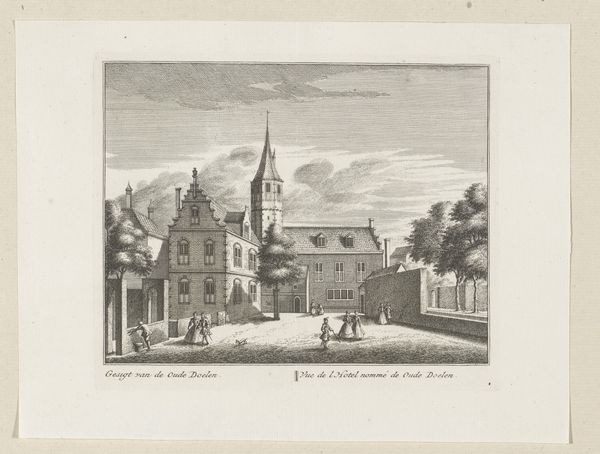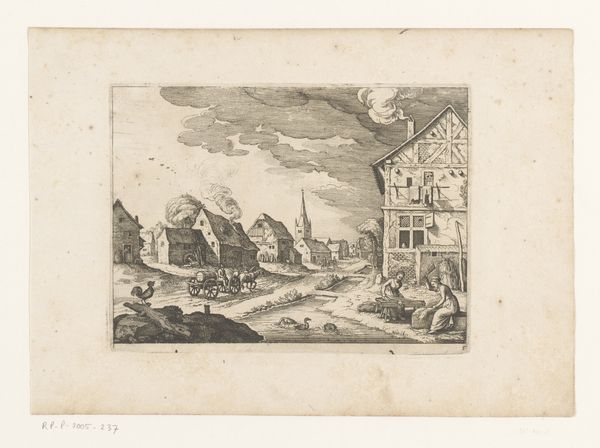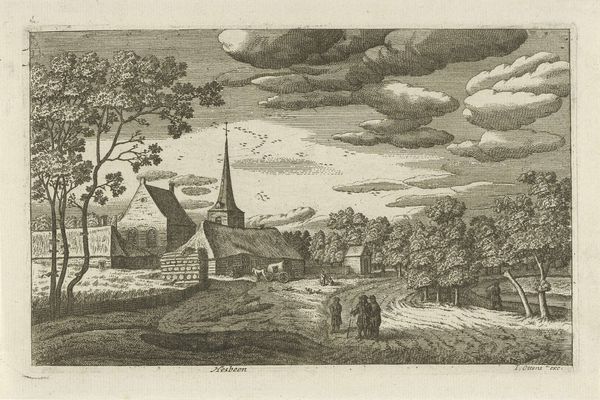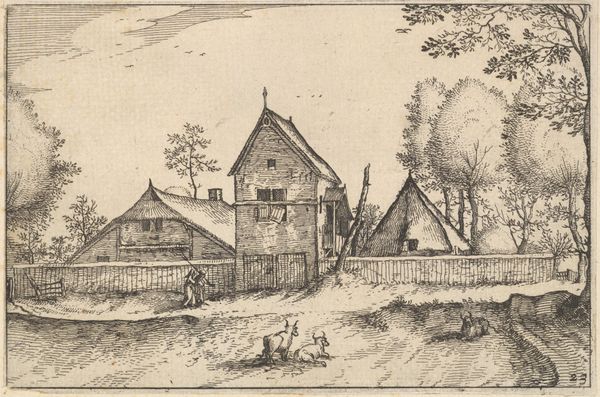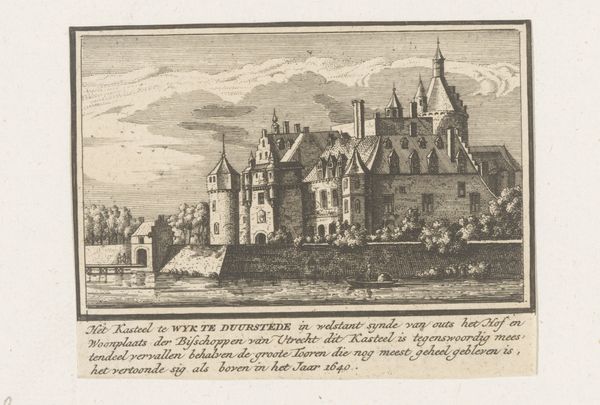
print, engraving
#
dutch-golden-age
# print
#
pen illustration
#
old engraving style
#
landscape
#
geometric
#
pen-ink sketch
#
line
#
pen work
#
cityscape
#
engraving
Dimensions: height 66 mm, width 81 mm
Copyright: Rijks Museum: Open Domain
Editor: This is Jan Goeree's engraving, "Het Reguliersklooster buiten Amsterdam, 1503," made sometime between 1723 and 1738. It depicts a cityscape with a monastery. It’s interesting how detailed Goeree makes the building and yet the landscape appears relatively flat. What jumps out to you when you look at it? Curator: The stark linearity dominates. Consider the horizon, established not by atmospheric perspective or blended tones, but by repetitive, unwavering lines. Observe how this relentless linearity extends to the clouds and even informs the rendering of the vegetation. Note the strategic deployment of contrasting densities of hatching, creating areas of light and shadow. How might you read that? Editor: Well, it’s very organized. Everything is very clearly defined. It almost feels like a technical drawing, but the inclusion of figures gives it a narrative element too. I also wonder about the effect of light with dark and light lines. Curator: Precisely. And that organization creates a sense of… what? Imposing perhaps? Consider the relationship between the building and its inhabitants. Are they integrated, or is there a sense of division implied in the architectural forms? Notice the very controlled hand in which each line seems deliberate and considered to maximize volume and shadows, a semiotic code of power. What structural relationship exists between the various buildings depicted? Editor: Now that you point it out, they’re quite separate. It seems very measured and geometric overall, each of its parts distinct and, as you suggested, powerful. I am beginning to see what you mean about division in form. Thank you! Curator: Indeed. Analyzing art's compositional elements often clarifies how structural qualities shape interpretation. It's not just about what we see but how we see it.
Comments
No comments
Be the first to comment and join the conversation on the ultimate creative platform.
